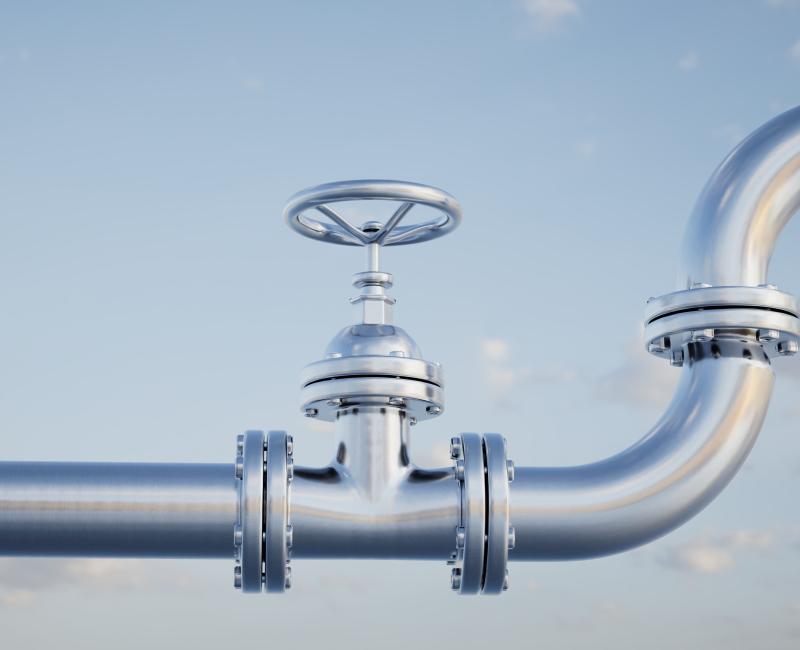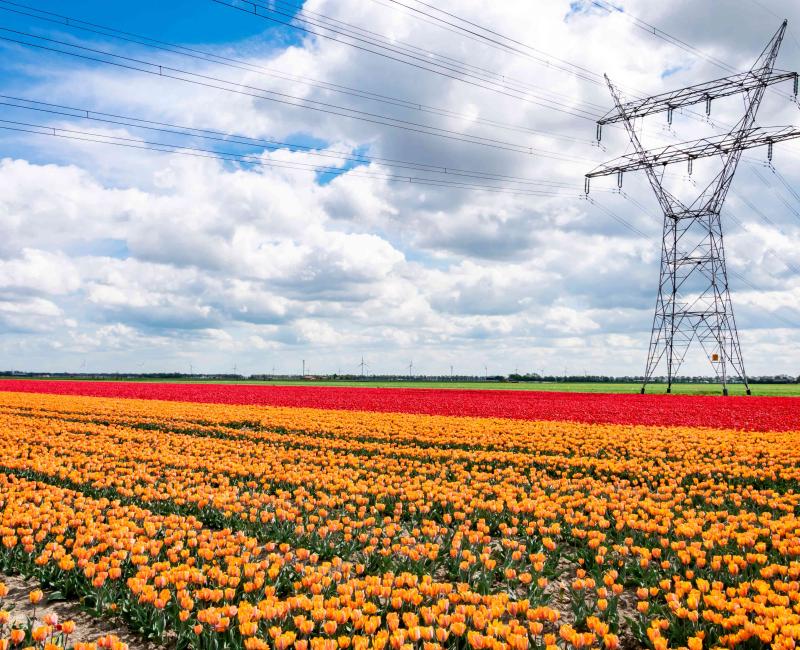17th AB meeting: background documents
17th AB meeting: background documents
ACER scrutinises the bi-directional gas flow decision at the EUGAL interconnection between Czech Republic and Germany

ACER scrutinises the bi-directional gas flow decision at the EUGAL interconnection between Czech Republic and Germany
What is it about?
ACER has released its Opinion on a recent decision concerning the bi-directional gas flow capacity at the cross-border Interconnection Point (IP) ‘Deutschneudorf EUGAL’ between Germany and the Czech Republic.
What is bi-directional gas flow capacity?
Under the European Security of Gas Supply Regulation, Transmission System Operators (TSOs) must establish permanent physical capacity for gas transport in both directions (bi-directional capacity) at all IPs between Member States. However, temporary exemptions can be granted following a detailed assessment and consultations with stakeholders, other Member States, and the European Commission.
ACER’s assessment
ACER reviewed the decision by Bundesnetzagentur, the German National Regulatory Authority (NRA), which was taken in coordination with the Czech Ministry of Industry and Trade. The decision accepts the German TSO’s proposal, which claims that the obligation for bi-directional capacity at the EUGAL IP has already been fulfilled. It concludes that both countries meet the necessary infrastructure standards for securing gas supply and that there is no need for additional capacities from the Czech Republic to Germany.
While ACER considers that the decision complies with most of the Regulation requirements, it identified two missing elements:
- a feasibility study; and
- a cost-benefit analysis (CBA).
Additionally, the TSO proposal and the decision state that the need for an exemption to maintain bi-directional gas flow capacity at the ‘Deutschneudorf EUGAL’ IP is no longer necessary, as bi-directional gas flow capacity could be ensured during a gas supply crisis scenario. However, ACER notes that no significant investments or capacity upgrades took place at this IP between 2020 and 2024.
What are the next steps?
ACER has submitted its Opinion to the relevant authorities of Germany and the Czech Republic, as well as to the European Commission for further consideration. The Commission may choose to either raise no objections to the decision or request modifications to it.
16th AB meeting: background documents
16th AB meeting: background documents
ACER to decide on hedging opportunities between the Netherlands and Norway

ACER to decide on hedging opportunities between the Netherlands and Norway
What is it about?
On 16 August 2024, the National Regulatory Authority (NRA) of the Netherlands asked ACER to decide on how to address the insufficient risk hedging opportunities at the bidding zone border between the Netherlands and Norway.
Why is a decision needed?
The assessments performed by the Dutch and Norwegian NRAs found insufficient hedging opportunities in their respective bidding zones. Sufficient long-term hedging opportunities are important to allow market participants to be protected against price volatility risks and to mitigate uncertainty on future returns on investments.
To improve this, NRAs can:
- Request their Transmission System Operators to issue long-term transmission rights.
- Ensure the availability of other long-term cross-zonal hedging products that can support the wholesale electricity market functioning.
Since the NRAs could not reach an agreement, the decision was referred to ACER and the EFTA Surveillance Authority.
What are the next steps?
To inform its decision-making process, ACER will run a public consultation from today until 22 November and will take a decision on the referral from the Dutch NRA by 17 February 2025.
The EFTA Surveillance Authority will issue a decision for Norway, following the procedure outlined in the EEA Agreement.
ACER’s monitoring shows European gas markets avoided severe gas price volatility in the third quarter of 2024

ACER’s monitoring shows European gas markets avoided severe gas price volatility in the third quarter of 2024
What is it about?
Today, ACER releases its third quarterly review of key developments in European gas wholesale markets as part of its 2024 Market Monitoring Report (MMR). The first and second publication were issued respectively in March and July 2024.
The report finds that despite supply uncertainty re-emerging, Europe avoided severe gas price volatility in Q3 2024. What’s novel in this quarterly edition is the new focus on the evolution of cross-border gas transport tariffs, which have been rising in recent years. While transport costs currently have a relatively small impact on price formation, their influence is expected to grow, affecting how the EU gas market operates in the future.
- Gas prices: In Q3 2024, European gas wholesale prices rose but remained less volatile than last year due to increased Norwegian supply, healthy storage levels, and low demand.
- Price integration: Price integration across most EU gas hubs remained consistent, although some divergence occurred due to the rising German storage levy.
- Gas demand: Stagnant household demand and a modest increase in industrial demand were outweighed by a reduced call on gas-fired electricity generation, leaving overall EU gas demand slightly lower than in 2023 and well below pre-crisis levels.
- Renewables continue to displace gas generation: Increased renewables’ output limited the opportunities for conventional power plants (gas and coal) to run profitably. This lowered carbon emissions, loosened the EU gas demand-supply balance and reduced instances of gas setting marginal prices in electricity markets.
- Storage: The EU reached its 90% gas storage target ahead of schedule, despite lower year-on-year injections throughout the quarter.
- Transmission tariffs: Gas transmission tariffs have been rising in some EU countries, with little evidence so far of impacting price convergence. More tariff increases are expected in the near-term, warranting monitoring of the effects of tariff changes on cross-border trade and market integration.
What challenges lie ahead?
- The Russian gas transit agreement through Ukraine expires in 2024, pushing Central Europe to seek alternative supply routes.
- If gas withdrawals this winter significantly exceed the previous years, the EU may face increased competition in LNG markets for 2025, potentially driving up wholesale gas prices.
- Several LNG production projects are under construction, but major new LNG volumes are expected only from 2026 onwards.
ACER will continue to closely monitor trends in the European gas markets that could lead to short-term volatility for European energy markets. The next update on the European gas wholesale markets will be published early in 2025.
Key developments in European gas markets – Q3 2024
-
 Gas
Gas

2024 Market Monitoring Report
What gas market trends did ACER monitoring find?
The third quarterly review of key developments in gas wholesale markets in 2024 finds that despite supply uncertainty re-emerging, Europe avoided severe gas price volatility. This edition of key developments also focuses on the evolution of gas transmission tariffs and their effects on wholesale prices.
- Gas prices: In Q3 2024, European gas wholesale prices rose but remained slightly lower and considerably less volatile than in the same period last year. Increased Norwegian supply, healthy storage levels, and low demand helped moderate price pressures stemming from a tighter global Liquified Natural Gas (LNG) market, geopolitical instability, and uncertainty around remaining Russian gas transits via Ukraine.
- Price integration: Prices were uniform across most EU gas hubs, though not all. Those markets where gas transported through Germany plays an important supply role experienced divergence as the German storage levy increased.
- Pipeline and LNG supply: EU gas imports decreased year-on-year in Q3, continuing a trend seen throughout 2024. While pipeline supply from Norway increased, this was offset by lower LNG imports, as EU buyers avoided competing for higher priced spot cargoes in an otherwise balanced European gas market.
- Gas demand: Stagnant household demand and a modest increase in industrial demand were outweighed by a reduced call on gas-fired electricity generation, leaving overall EU gas demand slightly lower than in 2023 and well below pre-crisis levels.
- Renewables continue to displace gas generation: Increased renewables’ output limited the opportunities for conventional power plants (gas and coal) to run profitably. This lowered carbon emissions, loosened the EU gas demand-supply balance and reduced instances of gas setting marginal prices in electricity markets.
- Gas storage: The EU-mandated 90% gas storage level was reached several weeks ahead of the 1 November deadline, despite lower year-on-year injections throughout the quarter. The market signal to store gas (i.e., the summer-winter spread) remained positive and consistent but was notably weaker, on average, compared to the previous two filling seasons (i.e., summer of 2023 and 2022).
- Gas transmission tariffs: There have been significant increases in transmission tariffs in recent years in some EU Member States but limited evidence that these increases have led to reduced gas price convergence so far. More tariff increases are expected in the near-term, warranting monitoring of the effects of tariff changes on cross-border trade and market integration. Future tariff levels will depend on demand trends, asset depreciation, and decarbonisation efforts.
What challenges lie ahead?
- The agreement for transportation of Russian gas through Ukraine expires at the end of 2024, and its renewal is unlikely. Landlocked Central European countries will need alternative supply routes, making cross-border trade essential for maintaining affordable gas prices.
- If gas withdrawals this winter significantly exceed those of the past two, EU buyers may need to increase their competitiveness in LNG markets to replenish stocks in 2025, potentially driving up wholesale gas prices. Weather conditions will play a key role in either exposing or mitigating these risks.
- Several LNG production projects are currently under construction, but relief for a tight global LNG market may not be imminent. Facilities expected to deliver the first cargos to the global market in 2025 face uncertainty in commissioning and production ramp-up. Significant additional LNG volumes are anticipated from 2026 onwards, as several large projects are scheduled to come online.
ACER will continue to closely monitor trends in the European gas markets that could lead to short-term volatility for European energy markets. The next update on the European gas wholesale markets will be published early in 2025.
Highlights
Report
The report finds that despite supply uncertainty re-emerging, Europe avoided severe gas price volatility in Q3 2024.
What’s novel in this quarterly edition is the new focus on the evolution of cross-border gas transport tariffs, which have been rising in recent years. While transport costs currently have a relatively small impact on price formation, their influence is expected to grow, affecting how the EU gas market operates in the future.
Additional information
- Access the underlying datasets.
- Explore the previous publications on the topic, covering insights from Q1 & Q2.
No need for more Power Purchase Agreement templates

No need for more Power Purchase Agreement templates
What is it about?
The EU Agency for the Cooperation of Energy Regulators (ACER) concludes that there is no need for developing new voluntary Power Purchase Agreement (PPA) templates in the EU energy market.
What are the PPAs?
PPAs are contractual arrangements between electricity producers (often renewable energy generators) and buyers. By providing renewable electricity at mutually agreed rates, these contracts foster stability for both parties and promote renewable energy sources (RES).
What is the ACER assessment about?
The (2024) Electricity Market Design (EMD) Regulation promotes PPAs as long-term instruments for ensuring price stability. As part of the EMD reforms, ACER was tasked with assessing whether additional voluntary PPA contract templates are needed to foster the transparency, efficiency and integration of the European internal energy market.
In conducting its assessment, ACER engaged with more than a 100 diverse stakeholders including through an expert group and a public consultation over summer 2024.
What are ACER’s conclusions?
ACER’s engagement with stakeholders showed that:
-
Existing templates, developed by industry associations and national bodies, are largely sufficient for current market needs.
-
These templates help market participants (especially newer or smaller players) reduce legal costs and streamline the initial phases of the contracting process.
-
Addressing critical market barriers, such as project development bottlenecks, would have a more meaningful impact on fostering the PPA market.
ACER concludes that there is no need to introduce new voluntary PPA contract templates. Instead, ACER will provide recommendations on how to improve existing ones and advise on how to remove barriers to market integration.
What are the next steps?
ACER will continue to monitor the PPA market as part of its reporting obligations and to support market participants by addressing structural barriers in its recommendations.
Updates will be regularly shared with stakeholders on the ACER’s website and via the newsletter.
Power Purchase Agreements (PPAs)
Power Purchase Agreements (PPAs)
What is it about?

Power Purchase Agreements (PPAs) are contractual arrangements between electricity producers (frequently renewable energy generators) and buyers. By providing renewable electricity at mutually agreed rates, these contracts foster stability for both parties and promote the adoption of renewable energy sources (RES).
The Electricity Market Design (EMD) Regulation introduces measures to promote PPAs as long-term instruments for ensuring price stability and promote the deployment of renewable energy sources.
ACER has been tasked to assess whether the introduction of additional voluntary PPA contract templates is needed to foster the transparency, efficiency and integration of the European internal energy market.
Power Purchase Agreements (PPAs)
What is the role of ACER?

The EMD Regulation mandated ACER to:
- assess the need to develop new voluntary PPAs contract templates;
- monitor the PPA market through annual assessments;
- address any remaining barriers to market integration.
Assessment on the need for additional PPA contract templates
To inform its assessment, ACER engaged with a broad range of stakeholders through an expert group and a public consultation over summer 2024. More than 100 European and international stakeholders, including market players, sector associations, legal professionals, and academics, participated in the consultation process.
Following this comprehensive consultation process, ACER concluded that introducing new voluntary PPA contract templates is not necessary:
- Existing templates, developed by industry associations and national bodies, are largely sufficient for current market needs.
- These templates already provide sufficient guidance for market participants, help them reduce legal costs and simplify the contracting process.
- Addressing critical market barriers, such as project development bottlenecks, would have a more meaningful impact on fostering the PPA market.
ACER will continue to monitor the PPA market as part of its reporting obligations and to support market participants by addressing structural barriers in its recommendations.
Annual assessment on the PPA market
As part of its annual monitoring report, ACER will publish an assessment of the PPA market both at European and Member State level.
The assessment is expected to be published in Q4 2025 and will evaluate how PPAs impact barriers to market integration.
PPA Templates
To support market participants and facilitate PPA contracting, ACER has committed to gathering a list of publicly available templates suitable for European energy markets.
| Organisation | Link to template | Contact | Last submission to ACER | Jurisdiction | Language |
| Energy Traders Europe | EFET template | LCsecretariat@energytraderseurope.org | 11.04.2025 | European use | English (translations available in Bulgarian, French, German, Italian, Polish and Spanish) |
| German Energy Agency (DENA) | DENA template | marktoffensive@dena.de | 11.04.2025 | National focus (German and English law) | German |
| International Swaps and Derivatives Association (ISDA) | ISDA template | pwerner@isda.org | 10.04.2025 | International use | English |
